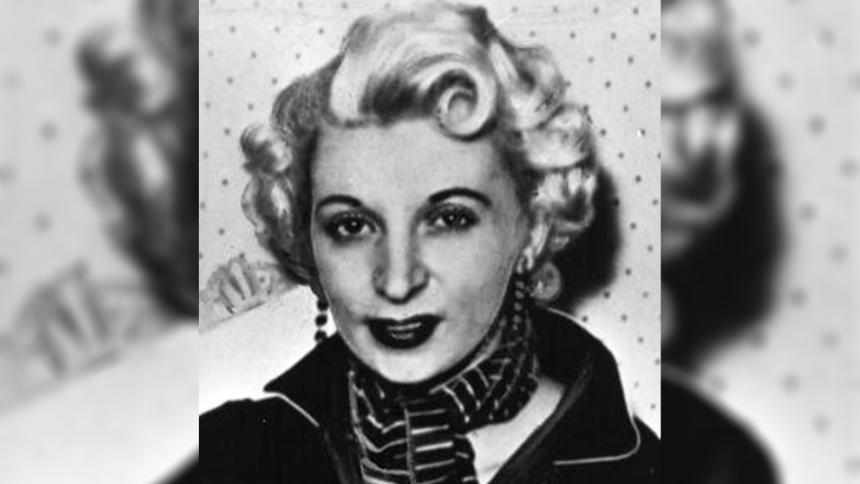
Would Ruth Ellis be convicted of murder today?
In 1955, Ruth Ellis was executed for the murder of her lover, David Blakely. As the anniversary of her death approaches, her case continues to endure. With the death penalty suspended and then removed in 1970, Ellis was the last woman to be executed in Britain, but 65 years later, how much else has changed for women like her?
Ruth Ellis was working as a manager of a club in Knightsbridge when she met the racing driver, David Blakely. Blakely quickly moved in with Ellis to her flat, even though he was engaged to another woman and Ellis began seeing RAF pilot Desmond Cussen at the same time.
On Easter Sunday, 10th April, Ellis arrived outside the pub where Blakely was drinking. As he emerged, Ellis pulled out a revolver and shot him, firing three more bullets into him after he collapsed. She then handed herself over to an off-duty police officer who was present.
It seemed like an obvious case: there were witnesses; she confessed. When the case went to trial, she even admitted that she shot Blakely with intent to kill.
If Ellis didn’t appear to help herself, the media’s perception of her also worked against her. She was the beautiful platinum blonde who appeared cool, collected and unremorseful. If her defence had concerns about her appearance working against her, nothing was done to change it.
There was also the class issue: 25-year-old David Blakely was former public schoolboy; 28-year-old Ellis had had little education and had come from a background of abuse and violence, from her father and then her husband. She had worked as a nude model. When her marriage collapsed, she turned to sex work. Her ex-husband denied paternity of their daughter. She worked as a hostess and the club she managed when she met Blakely was notorious, frequented by the likes of the Kray twins.
Blakely was physically abusive towards Ellis
The trial took place over two days and the jury came back with a guilty verdict after 15 minutes.
What the jury wasn’t allowed to take into account was the fact that Blakely was physically abusive towards Ellis, who said during the trial that he often hit her. 10 days before Blakely’s death, he had also punched a then-pregnant Ellis in the stomach. Afterwards, she suffered a miscarriage. Ellis’ lawyers submitted this evidence again by two days before she was executed, including witness accounts of Blakely’s violence and that Ellis believed he had caused her miscarriage. But the crime was seen as premeditated and ‘jealousy’ was discounted as a motive. The Home Secretary denied her a reprieve.
Also disregarded was Ellis’ confession on the day of her execution of Cussen’s role in the crime: she said they had been drinking together for hours beforehand, he had encouraged her to shoot Blakely and in fact, had given her the loaded gun and driven her to the scene. Her solicitor, Victor Mischon, rushed to the Home Office with the evidence and Scotland Yard were told to search for Cussen, but he wasn’t found and the evidence was dismissed that night. Ellis hanged.
It’s hard to deny that much has changed since Ellis was executed (not least the removal of the death penalty) and even that her case had a role in those changes. Today, we recognise ‘battered woman syndrome’, coercive control and the affect of domestic violence on the abused.
A modern parallel to Ruth Ellis is Sally Challen, who killed her husband with a hammer while he sat at their kitchen table, drinking a cup of tea. She, too, confessed to killing him and admitted it at trial. She was found guilty and sentenced to life in prison. But in 2019, she had her conviction overturned and finally walked free. Like Ellis, Challen was subjected to decades of abuse at the hands of her husband and this was recognised in her appeal, which took into account the insidious nature of coercive control. Her sentence was reduced to a nine-year sentence for manslaughter. Having spent 10 years in prison, she was freed for time served.
But it’s also hard to ignore the changes that have been slow to come and the ones that have yet to come at all. As recently as 2003, Ellis’ sister, Muriel Jakubait, brought her sister’s case to the Court of Appeal, after years of campaigning to have the case overturned. But the court ruled against her and the murder conviction remained. Even then, the defence of diminished responsibility did not exist.
And Challen still served 10 years, as coercive control wasn’t recognised by law as a criminal act until 2015—60 years after Ruth Ellis died.
Nor has the misogyny Ellis was subjected to at the hands of the press disappeared in the intervening years, either. Female criminals are still scrutinised by the press, their appearances picked apart and subjected to sexist overtones, from which men are usually exempt. Female teachers who abuse students can see their crimes illustrated with pictures of them in bikinis, deemed ‘seductresses’.
Women killers are regarded as an evil and unknowable ‘other’, compared even to their male counterparts. And though child killers of both sexes are understandably vilified, that double standard still exists. Women who do so are harder to understand as as they’ve overcome the supposed inherent female instinct to protect and nurture. For men, the condemnation is much simpler. Just look at Myra Hindley at Ian Brady. At the time of their trial, the judge acknowledged Brady’s influence over Hindley and the hope she may see redemption away from him—unlike the irredeemable Brady. Her private papers recount Brady drugging, raping and physically abusing her. Yet in the intervening years, she has become a paradigm of female evil.
If Ruth Ellis committed her crime today, the outcome would necessarily be different. She would have been acknowledged as a victim of abuse and sentenced to manslaughter, rather than hanged as the cold and unrelenting murderess. Much has necessarily changed; but at the same time, not enough has.







